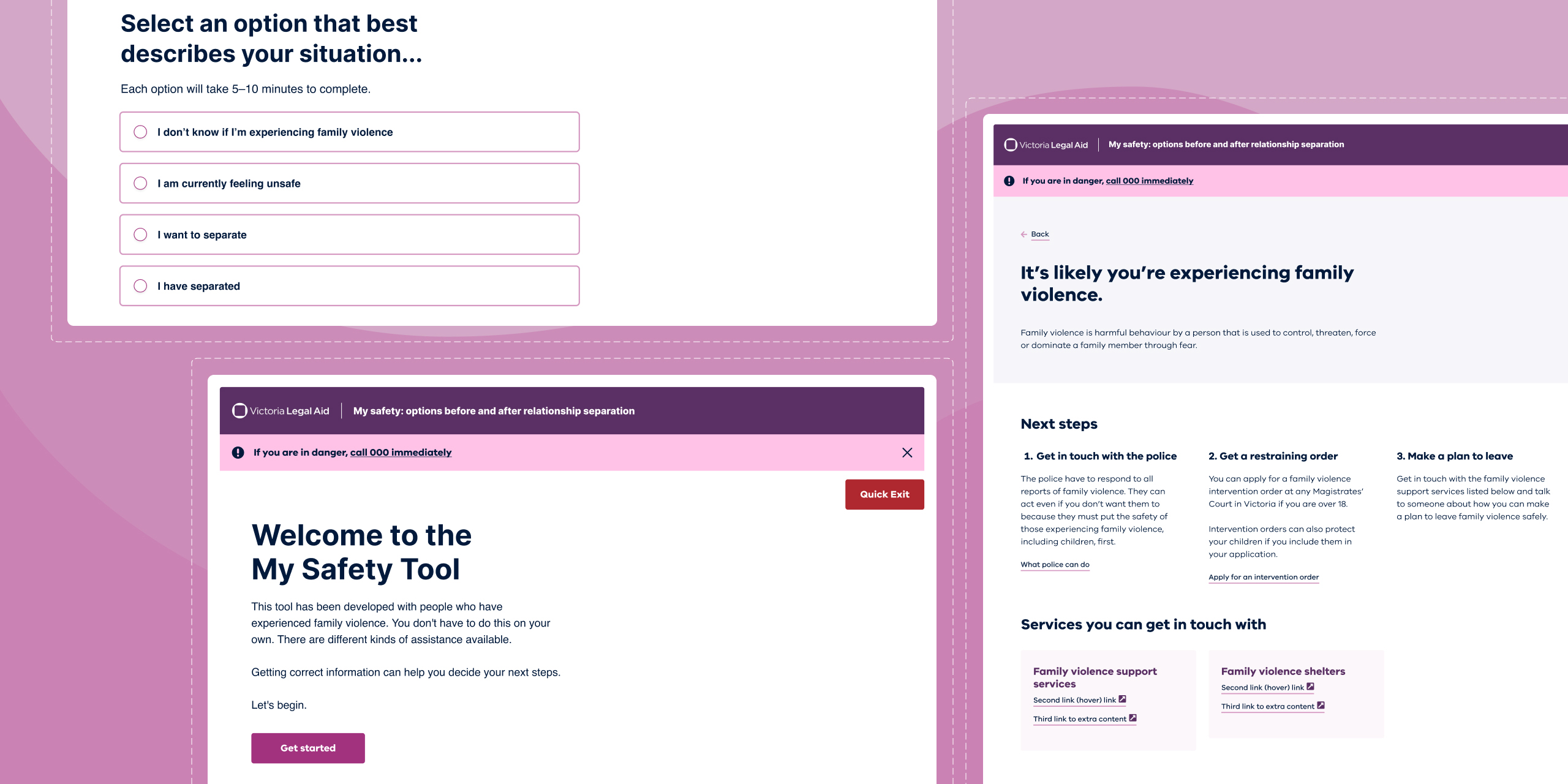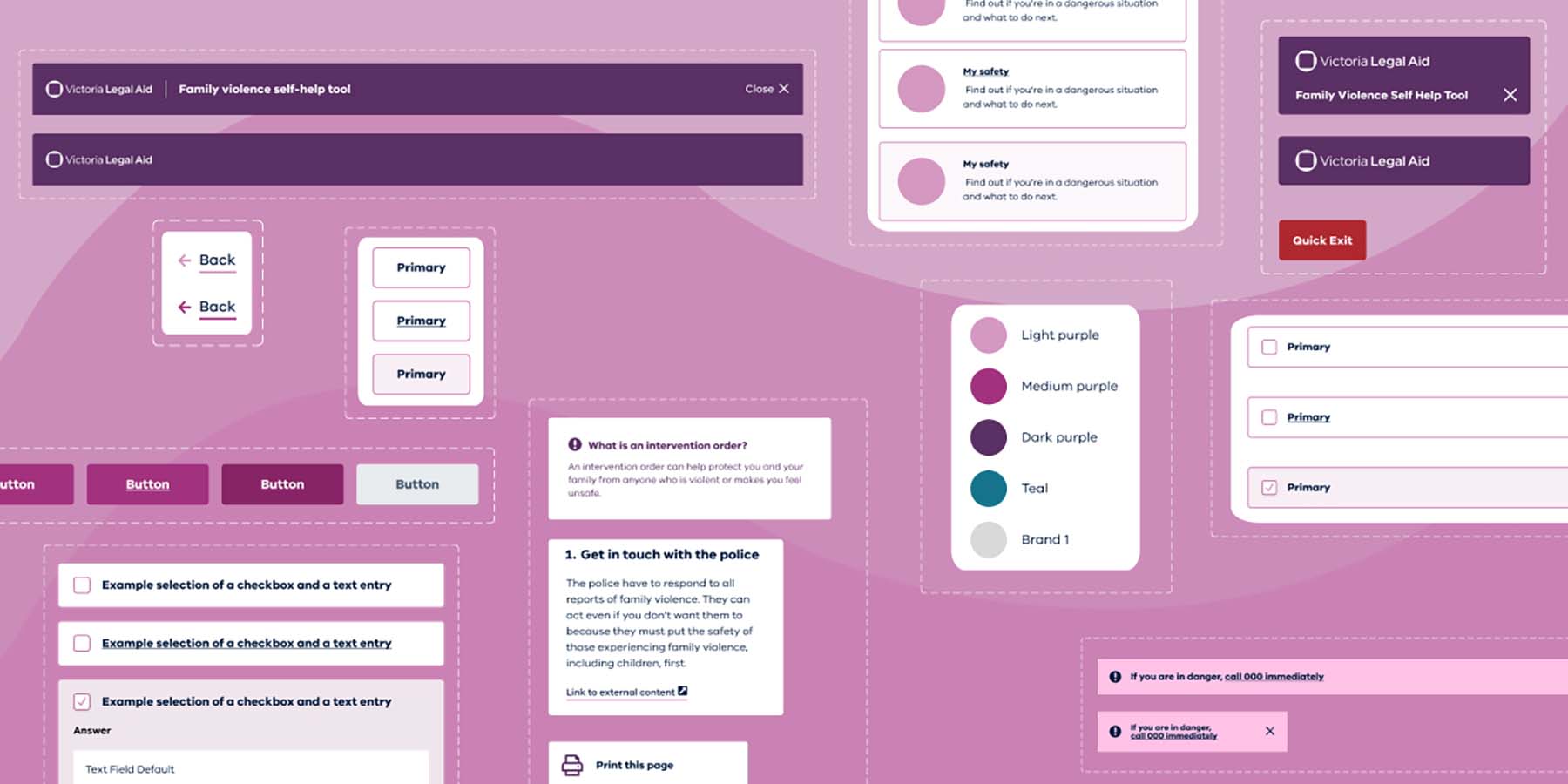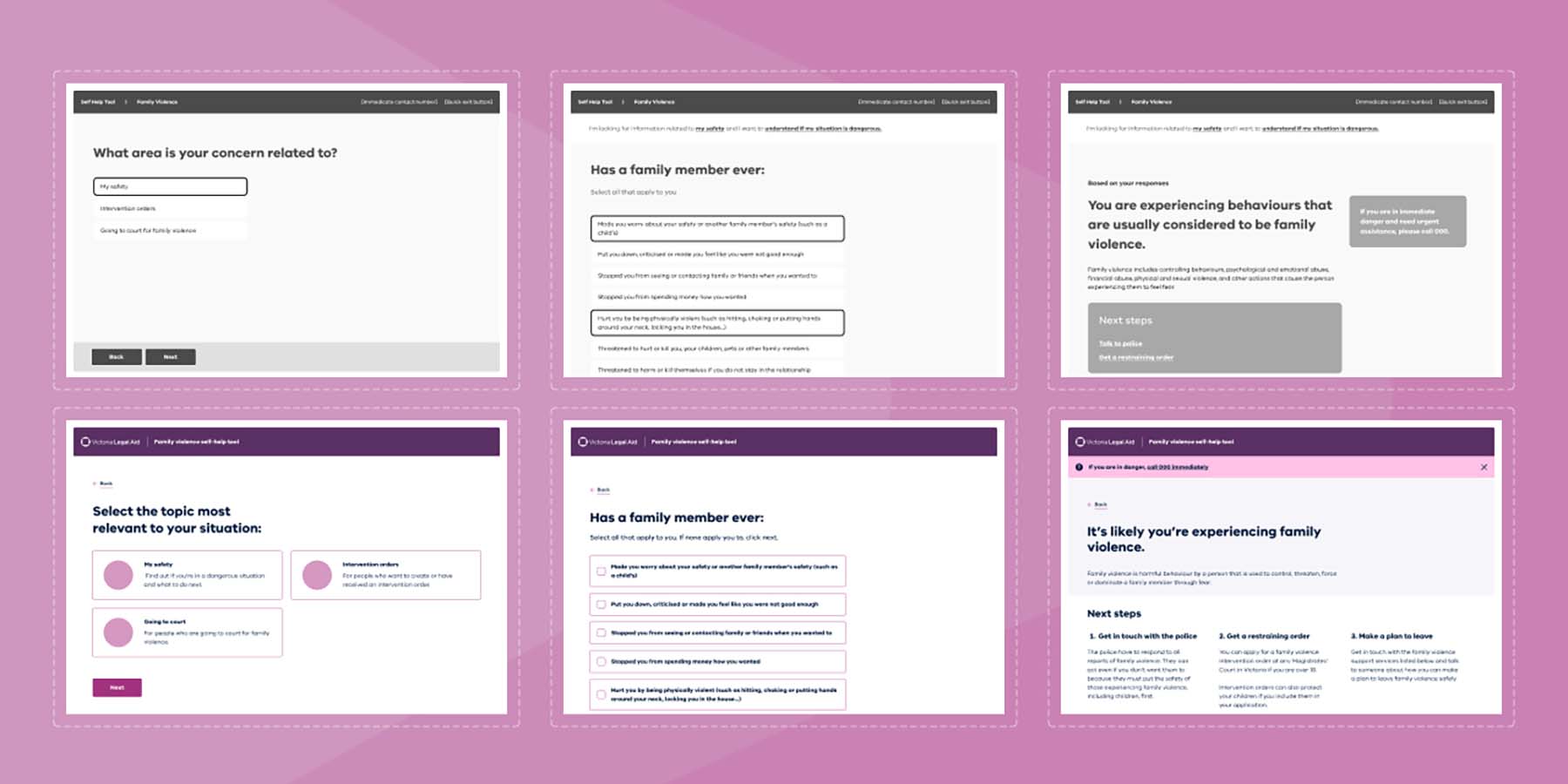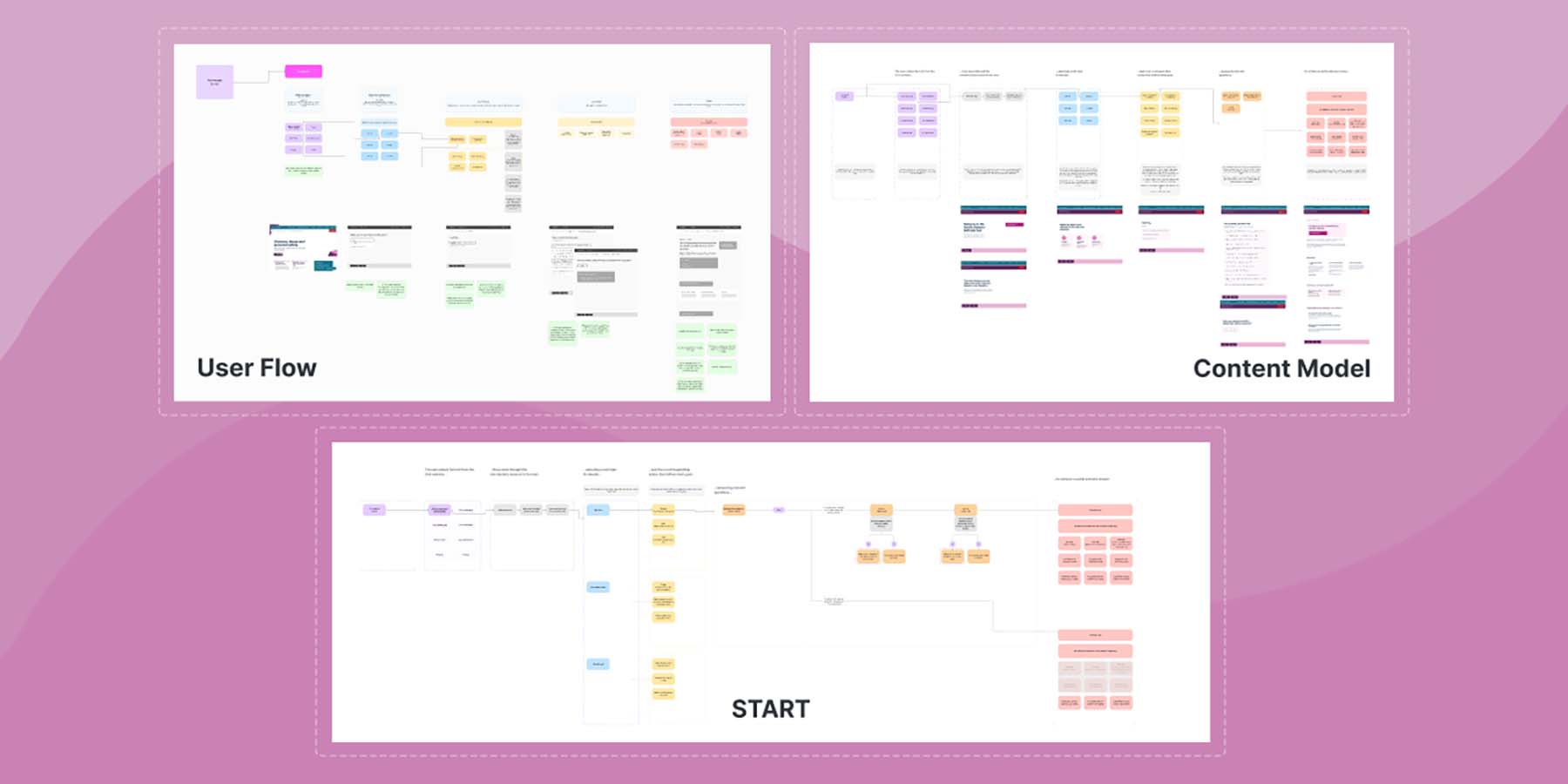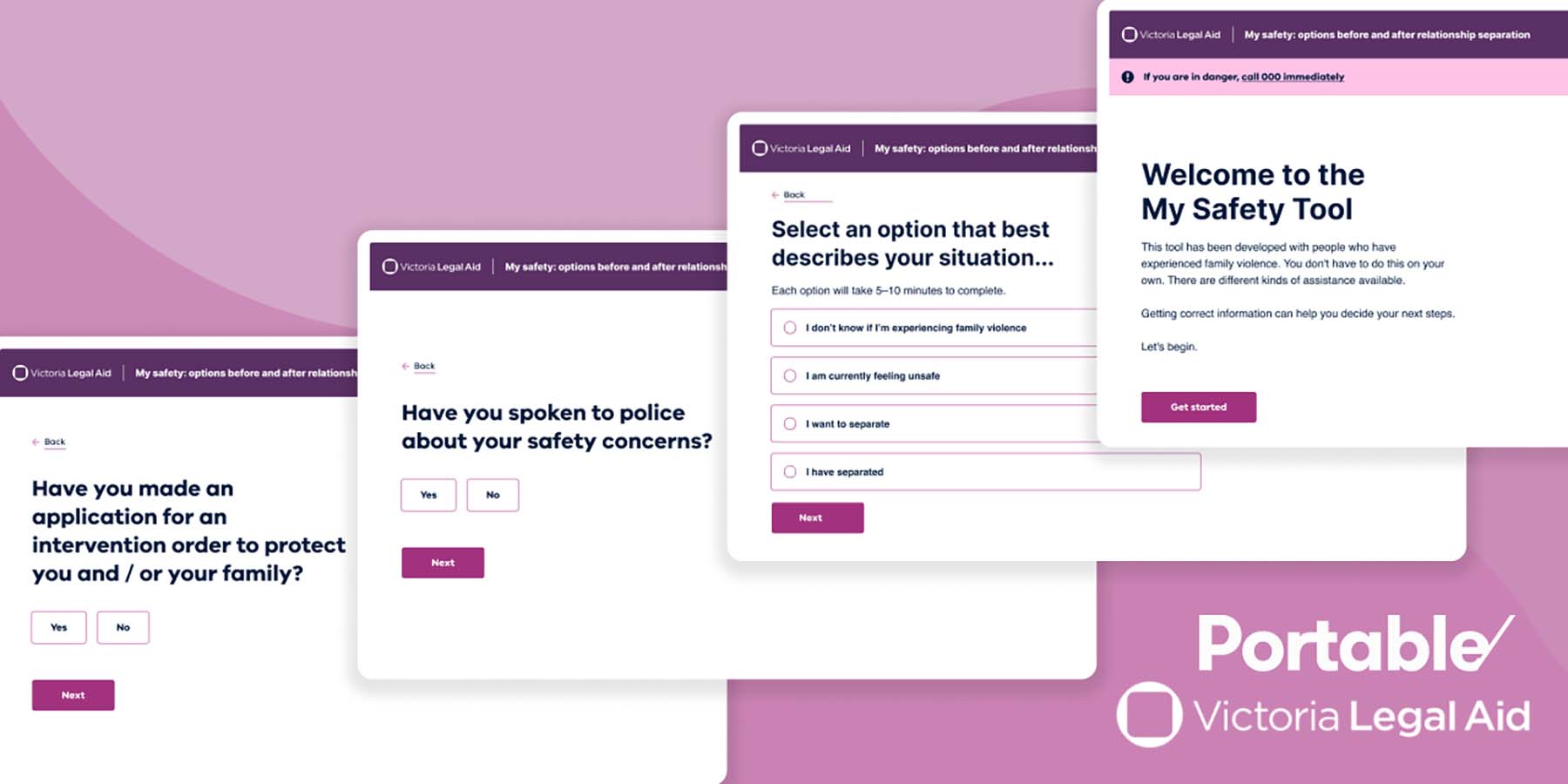Our design process started with a comprehensive review of the SDP framework that Victoria Legal Aid (VLA) and Independent Mental Health Advocacy (IMHA) websites were built on. The goal was to determine how we could adapt it to facilitate the integration of self-help tools. We realised that while there were existing components that supported self-help, they were insufficient for the more complex tools needed.
We assembled a team of user experience (UX) designers and experience-design (XD) researchers with expertise in Justice who worked closely with VLA's content teams to reformulate the existing tools to fit the new format. The XD team adeptly used the extensive SDP design system and component library to create new components that were in line with the existing SDP language and VLA style guides.
Our development team was tasked with architecting a deliverable which was compatible with the Drupal-based CMS, with the first use case focusing on the Screening Triage & Referral Tool (START). The tool was designed with a generic content model to guide future self-help tools, taking into account potential future uses and features.
We also prioritised meeting the needs of the most vulnerable groups, collaborating with VLA's lived experience team to run a workshop with people experiencing family violence. This human-centred approach was instrumental in the successful execution and completion of the design that not only met but exceeded the original brief.
This demonstrates our adherence to a professional design process where the project was executed to high standards, incorporating the needs of those seeking support, and successfully addressing the initial design brief.

